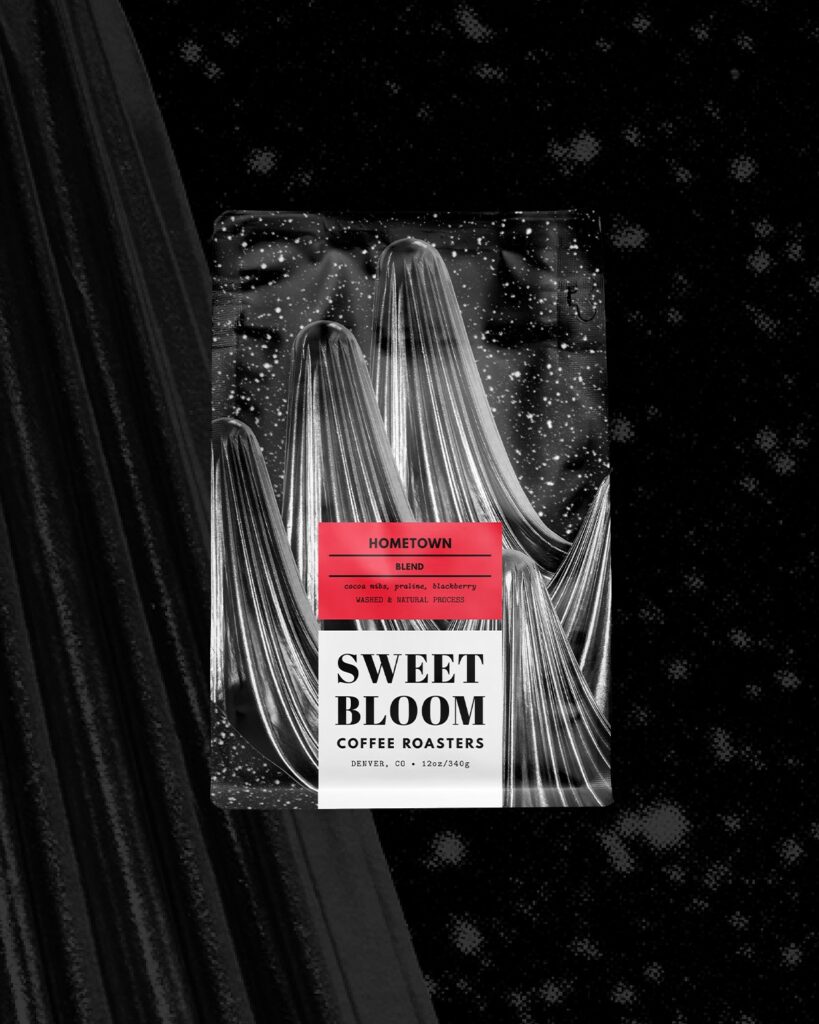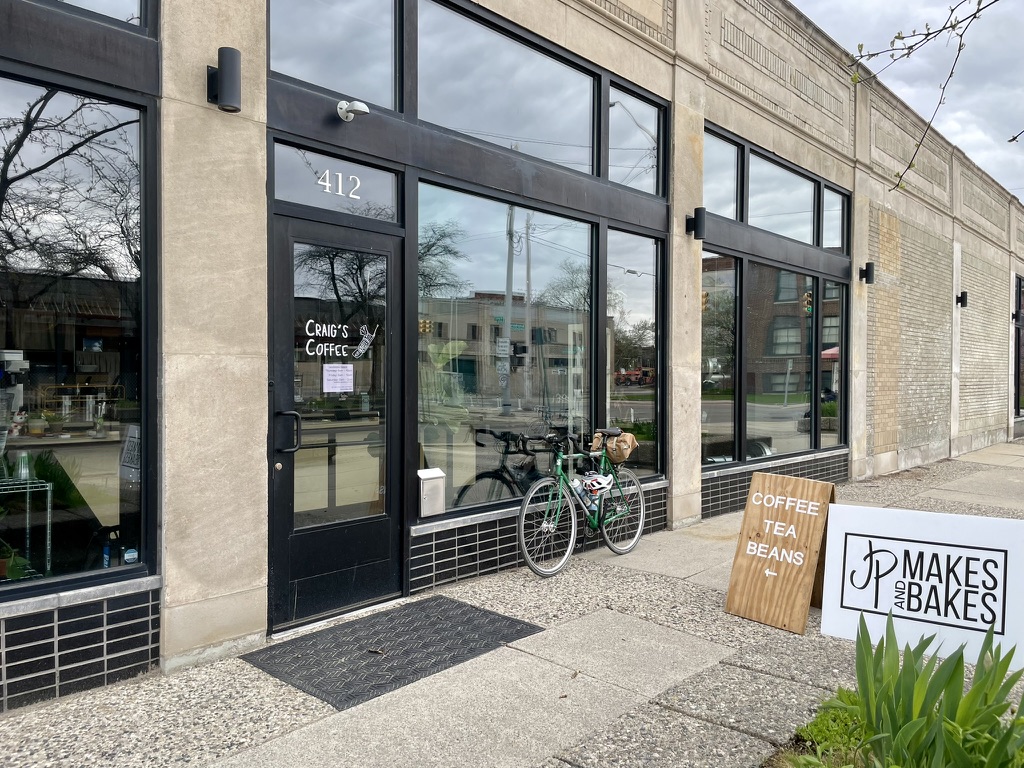Espresso is the heart and soul of every cafe menu. Traditionally, espresso blends have signaled to consumers a darker roast profile with flavor notes like caramel, molasses, and brown sugar. But many roasters are experimenting with coffees that add bold, fruity flavors to their most popular espresso roasts.
The key to a standout espresso lies in balance. For roasters, it’s about creating a blend that remains memorable, whether the espresso is sipped as a straight shot or poking through milk in a latte. Nailing that balance is essential: most cafe menus revolve around espresso-based drinks, so building a blend that is unique, versatile, and harmonious is one of the most critical decisions a roaster can make.
Thump Coffee
Location: Bend, Oregon
Espresso: Storm King
Named after a mountain bike trail in Bend, Oregon, Thump Coffee’s Storm King is a bright espresso blend with notes of berries, deep chocolate, and a velvety body. Owner Bobby Grover crafts this blend with one goal: consistency in every cup.

Thump roasts coffee for its one retail location but also supplies coffee to many cafes across Oregon. Grover says his customers value reliability and considers Storm King their most dependable coffee. Currently, the blend includes coffees from Colombia, Brazil, and Ethiopia. “We’re trying to get a deep chocolate body with a nice acidity so it pushes through milk well,” says Grover. “Everything is roasted at a medium level, which smooths out the coffee.”
Grover sources coffee with the flavor profile in mind to build a consistent blend. By zeroing in on the roast profile rather than being attached to specific origins, people “know what they’re going to get when they buy it,” says Grover. “When we don’t fall in love with origin and stick to our roast profile, it’s always consistent.”
Thump also uses coffees rated 85 points or higher by the Specialty Coffee Association (SCA). “It’s very fresh coffee that’s highly rated,” says Grover.
Sweet Bloom Coffee Roasters
Location: Lakewood, Colorado, just outside Denver
Espresso: Hometown Blend
Hometown has been a staple at Sweet Bloom Coffee Roasters for over a decade. This medium roast blend combines beans from Ethiopia and Colombia to create a flavor profile highlighting the best of both regions.
Owner Andy Sprenger says one of the advantages of this blend is that it remains fresh throughout the year. “The base is always from Colombia, so we take advantage of the two harvests,” he says, referencing Colombia’s unique biannual harvest. By using Colombian coffee as the base for Hometown, Sweet Bloom can get fresh coffee for the blend throughout the year.


“You’re never going to see Hometown very tired,” says Sprenger, noting that they get fresh crop coffees in before the green coffee tastes stale or flat.
Hometown represents 40 to 50 percent of Sweet Bloom’s weekly roast schedule. It’s one of the few espresso blends they offer, except for a seasonal winter blend available from November to January. “Hometown is year-round, so it’s become a perennial favorite. There’s a following on retail and wholesale,” says Sprenger.
The individual coffees used in Hometown are also frequently sold as single-origin offerings. “We feel like it’s a high-quality blend. We’re not just finding the cheapest components—it’s a coffee we’re proud of,” Sprenger says.
Dave’s Coffee
Location: Narragansett, Rhode Island
Espresso: Blind Pig
Blind Pig started as a house espresso blend and soon became a favorite at Dave’s Coffee, where it is served both as espresso and drip coffee. Owner David Lanning says the name of the blend is a callback to their early days of roasting: “The name stems from the days when we were home roasting and sneaking some of this coffee through the back door for customers to sample.”
The blend uses two naturally processed coffees to achieve its fruity and nutty flavor. “Ethiopian coffee brings dark chocolate flavor with a bit of acidity and notes of sweet berries. We add the Brazilian [coffee] to get that reddish crema on top and nutty, sweet milk chocolate notes,” says Lanning. “Together, they balance each other out to create a nice espresso.”
Lanning developed the espresso blend with the brand’s two cafes in mind, where most drink orders are espresso-based drinks like lattes and cappuccinos. “It makes a great shot just to drink on its own, but it’s designed to shine in milk-based drinks,” he says.
Blind Pig has become a staple of the Dave’s Coffee lineup. “It’s one of our most popular coffees at retail,” says Lanning. “We also do a lot of subscriptions online and Blind Pig is almost always in [customers’] subscription lists—and it stays there.”
Craig’s Coffee
Location: Detroit, Michigan
Espresso: Motown Espresso Blend
Like many of us, Craig Batory had extra time in the summer of 2020. An experienced coffee roaster, Batory started experimenting with building an espresso blend. This tinkering soon led to the launch of his roasting business and cafe, Craig’s Coffee.

He started playing around with roasts based on past blends he enjoyed. “I had an idea from a couple of previous roasters I worked at—they all had some exquisite espresso blends,” he says. That’s how Batory began crafting the Motown blend, which quickly became one of the first staples at Craig’s.
The blend features up to six coffees from various origins, with Brazil and Guatemala coffee as the foundation. “I try to be transparent about what’s exactly in the blend,” says Batory.
He also mixes in small amounts of robusta to add extra body and texture. “I have a lot of customers reach out and ask about the robusta,” he says. “Traditionally, I think it has a bad rep, but I’ve been fortunate enough to get this robusta now with a good hazelnut quality. I’ve gotten some lovely robusta from Vietnam, but I found a really nice one from Mexico that we use now.”

Batory says he tries not to let rising coffee prices compromise the quality of the Motown blend or affect his sourcing decisions. “The cost of a lot of coffees is going up, but I just account for that and adjust the price as needed,” he says. “I want to maintain the consistency I have without having to cut any corners.”
Canyon Coffee
Location: Los Angeles, California
Espresso: Beachwood
When Casey Wojtalewicz and his partner Ally Walsh launched Canyon Coffee in 2016, their vision was to create a wholesale roasting company using exclusively single-origin and certified organic beans.


“We have our cafe, but our coffee program is based around selling to other cafes for service,” explains Coffee Director Matthew Williams. “Beachwood is by far our top coffee, both wholesale and retail.”
Introduced in 2018, Beachwood quickly became a favorite. Named after the canyon in Los Angeles that leads up to the Hollywood sign, this espresso is known for its milk chocolate-tasting notes. “We shoot for a creamy milk chocolate, both in flavor and consistency,” says Wojtalewicz. “We’re looking for that caramel quality that gives it a milk chocolate feel versus the darker chocolate notes.”

From the beginning, Beachwood’s philosophy has been about highlighting the coffee’s natural essence. The coffee currently in Beachwood is sourced from Peru and is known for its creamy body and sweet finish. “Its caramel [flavor] is our approach to highlighting the coffee’s natural flavor without us taking it too dark,” says Williams.
Canyon does modify components of the espresso seasonally to uphold consistency. “We service a wide range of cafes and not all of them go for the bright boutique coffees,” says Wojtalewicz. “They just want good coffee that’s easy to work with, and that’s what Beachwood is all about.”
















